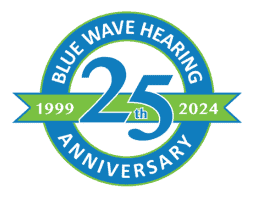- Driving Tips for Hearing Aid Users - May 9, 2025
- Alcohol and Hearing Health - April 9, 2025
- How Smoking Can Harm Your Ears - March 11, 2025
Hearing aids are designed to assist in improving hearing, but they also play a critical role in increasing safety on the road. These devices help detect sounds like honking horns, emergency vehicle sirens, and even the voices of passengers. This makes understanding their function in driving important. Maintaining and adjusting them properly can make a significant difference while behind the wheel.
Always Check Hearing Aids Before Driving
The first step toward safer driving is ensuring that hearing aids are functioning properly. Before hitting the road, check the battery life, volume levels, and overall condition of the devices. A sudden loss of power or an unnoticed technical issue could lead to dangerous misinterpretations of auditory cues.
Enhancing Situational Awareness
While hearing aids enhance hearing, relying solely on them is not advisable. It’s essential to adopt other practices that boost awareness and ensure safe driving.
Good vision and hearing work hand in hand to create a complete picture of the road. Therefore, keeping the car windows clean and adjusting mirrors for minimal blind spots is important. Always ensure that eyeglass prescriptions are up-to-date, if applicable, and never ignore visual signs like traffic lights and pedestrian indicators.
Distractions can occur easily. Therefore, keep the car’s interior organized and minimize noise levels by adjusting the radio or conversing calmly with passengers. This creates an environment that allows for better concentration and response to outside sounds and signals.
Adjusting Driving Routines for Maximum Safety
Every driver benefits from adjusted routines that cater specifically to their needs, including hearing aid users. Small changes can make the difference between a stressful drive and a calm, controlled experience.
Knowing the route beforehand reduces the need for sudden decisions while driving. Using GPS is helpful, but check it periodically to ensure hearing the directions clearly through the hearing aids. This allows for anticipation of turns and stops, contributing to overall safety.
During peak traffic hours, noise levels and distractions tend to increase. Opt for traveling at times when roads are less congested. Not only does this make the driving experience calmer, but it also reduces the risk of unexpected sounds that may overwhelm hearing aids.
Ongoing Hearing Health Maintenance
Part of safe driving involves ensuring that hearing health is in optimal condition.
Scheduling regular visits to a hearing health professional is vital. Regular check-ups ensure that hearing remains at levels that support safe driving. Hearing aids might need recalibration or cleaning, a process that professionals handle effectively.
Hearing aid technology improves constantly. As updates become available, consider whether newer models would provide improved hearing experiences. Updated technology often comes with enhanced features, thereby offering better support for various sound environments encountered while driving.
Conclusion
Driving with hearing aids involves strategies that extend beyond the devices themselves. By understanding their role and adopting practices to enhance safety, every journey becomes more secure and enjoyable. Stay informed about personal hearing health, maintain regular check-ups, and make small but impactful adjustments to driving routines. Through these efforts, the open road becomes a place of independence and discovery.


